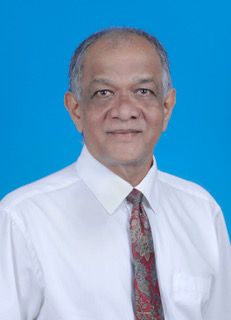
The intensive course is designed to prepare the candidate who is going to sit for the MRCOG Part 1 Examination. It has been updated in 2023. The course navigates through the blueprint of the syllabus by the Royal College, 2019. As stipulated, the 14 modules include: Anatomy, Biochemistry, Embryology, Endocrinology, Epidemiology/Statistics, Genetics and Physiology for Paper One and Biophysics, Immunology, Microbiology, Pathology, Pharmacology, Clinical Skills and Data Interpretation for Paper Two.
Each module will start with an interactive video lecture in the form of a question-answer format. Where the subject appears complicated an explanation will be given. Notwithstanding, the lectures cover the core or “must know” knowledge the candidate must have before he or she enters the Examination Hall. To test his understanding of the subject, each lecture will be followed by ample practice with single best answer (SBAs) questions on the topic. However, the candidate must supplement his or her knowledge with further reading. The RCOG website gives a list of useful reference books.
Please make the best of the Course and I wish you the best in your Examination.
Professor Kulenthran Arumugam
MBBS (Spore), MRCOG, MD, PhD, Dip Epid. (Lond)
Email: [email protected]
Course content
Anatomy of the abdomen and pelvis
Anterior abdominal wall including surface anatomy blood supply and nerves ; Internal structure of the abdominal wall; The inguinal region; The femoral triangle; Internal structures of the abdomen; Rectum and anal canal; Clinical box: Incisions, closures and sutures
The Bony pelvis; The pelvic side wall; The pelvic floor; The pelvic organs; The perineum; The bladder and ureter
Embryology
Ovum, spermatozoa and fertilization; Early embryology and organ derivatives; Development of the female reproductive system; Development of the urinary system; Clinical correlates
Biochemistry
Cell organelles and their function; Water and electrolyte physiology; Steroid chemistry; Prostaglandin chemistry/pharmacology; Biochemistry of vitamins; Oxygen and carbon dioxide transport; Haemoglobin-oxygen dissociation curve and its interpretation; Acid-base balance and their disturbances
Biophysics
Principles of ultrasound; Doppler in obstetrics; Principles of Magnetic Resonance Imaging; DEXA scans; Radiotherapy; Lasers in gynaecological surgery; Principles and safety of electro-surgery
Basic immunology
Understanding the players in the immune system; The innate system i.e. phagocytes, basophils, eosinophils, mast cells, complement system; The adoptive system: e.g. T cells and B cells and antibodies; Cytokines also called signaling molecules; An understanding of the types of hypersensitivity reactions; Transplantation immunology and the major histocompatibility complexes
Endocrinology
Puberty, intersex and primary amenorrhea; Premature ovarian failure; Hypothalamus and pituitary gland: clinical correlation; Thyroid gland and its dysfunction; Adrenal gland and it dysfunction; Blood glucose control, insulin and diabetes; Calcium metabolism; The menopause and osteoporosis
Genetics
The abnormal fetus and its causes: Aneuploidy, Genetic abnormalities Structural abnormalities; Principles of genetic inheritance and how to read a pedigree chart; Screening for trisomies: Latest NHS guidelines; Serum markers and ultrasound and noninvasive prenatal testing (NIPT); Chorion villus sampling and Amniocentesis Ultrasound as a screening tool; Cytogenetic analysis; Genetics of gynaecological malignancies
Microbiology
Common infections in gynaecology; Genital ulcers; Infections in pregnancy: viral and non-viral; Puerperal sepsis and nosocomial infections; Methods in diagnosis
Pathology
Cellular response to physiological and pathological stress e.g. necrosis, apoptosis, inflammatory response; Common non-neoplastic conditions in gynaecology e.g. lichen sclerosis, endometriosis, fibroids; Malignant diseases in gynaecology: CIN, Ca vulva, Ca cervix, Ca endometrium, Ca ovary; Chemotherapy; Pathology in obstetrics
Pharmacology
Pregnancy and pharmacokinetics; Teratogenesis; Drugs commonly used in obstetrics including pain relief in labour; Drugs commonly used in gynaecology; Hormonal therapy in gynaecology ; Prostaglandins covered in biochemistry; Cytotoxics covered in oncology (pathology)
Statistics and Epidemiology
•Basic statistics: Measures of central tendency and dispersion including distributions; Hypothesis testing: P value and 95% confidence intervals and Types of error; Overview of common statistical tests used and when to use them; Types of studies and levels of evidence; Clinical trials: methods and statistical analysis including strengths of association; Screening and diagnostic tests; Statistics of maternal, neonatal and perinatal mortality
Physiology
Spermatogenesis and sperm function; Folliculogenesis and the menstrual cycle; Ovulation induction and the hyperstimulation syndrome; Physiological changes in pregnancy; Placental anatomy and physiology including gestational trophoblastic diseases; Breast physiology; Fetal physiology including the cardiovascular changes, fetal monitoring and fetal haematology
Clinical skills
Preoperative, intraoperative and postoperative care; Surgical site infections and their control; Venous thromboembolism and its prevention; Use of common surgical incisions; Safety issues in laparoscopy and hysteroscopy; Types of sutures and their characteristics; Use and complications of diathermy and other energy sources including laser (covered in module on Biophysics)
Data interpretation
Clinical governance and research; Core surgical skills; Postoperative care; Antenatal care; Maternal medicine; Management of labour; Management of delivery; Postpartum problems; Gynaecological problems; Subfertility; Sexual and reproductive health; Early pregnancy care; Gynae Oncology; Urogynaecology
Your Instructor

Professor Kulenthran Arumugam
MBBS(Spore); MRCOG; MD; PhD; Dip Epid (Lond)
Professor Arumugam has been running the Part 1 MRCOG course and with great success for more than ten years. The course also attracts candidates from overseas Centres. He has now decided to take it online.
He has been both the Chairman of the Malaysian Representative Committee for the RCOG and part of many a” train the trainers courses” for the MRCOG Examinations organized by the Royal College in the past. He is well versed with the evolving format of the Part One Examination having been the organizer and facilitator for the MRCOG Examinations in Malaysia for more than twelve years. Besides being an experienced Obstetrician and Gynaecologist, he has a good grounding in the basic sciences having been a lecturer in the pre-clinical departments for two years before he took up Obstetrics and Gynaecology at the University Malaya Medical Centre. He is therefore well qualified to give this course. Where necessary however he has sought the help of his Faculty members to fill in the gaps.
For more information, please click here.
